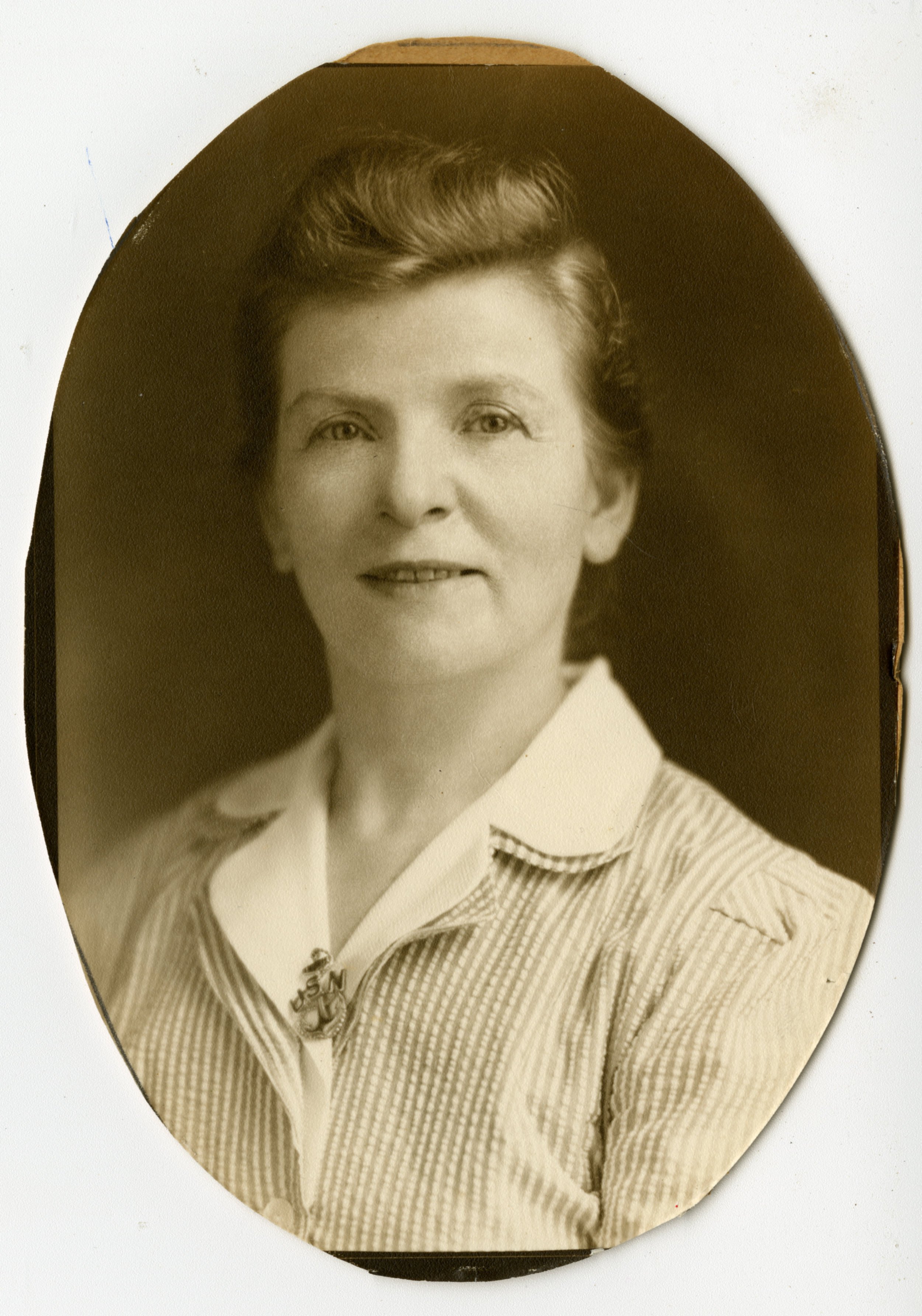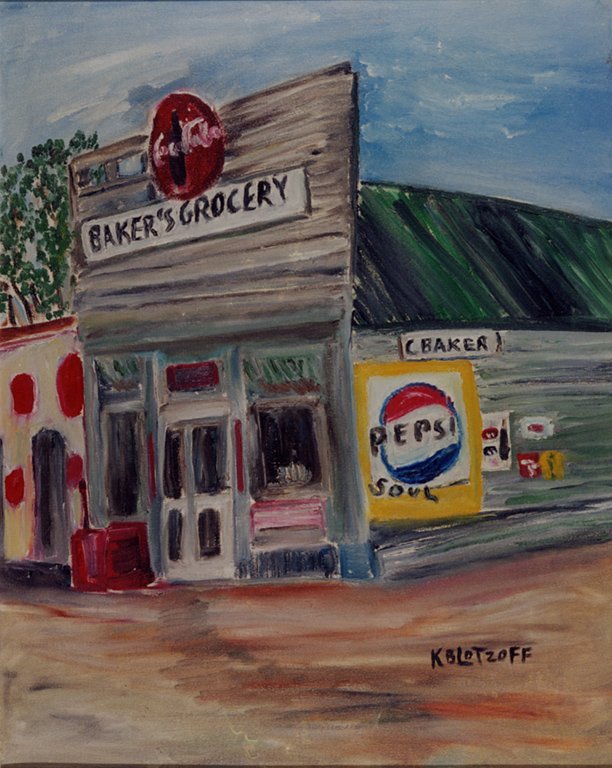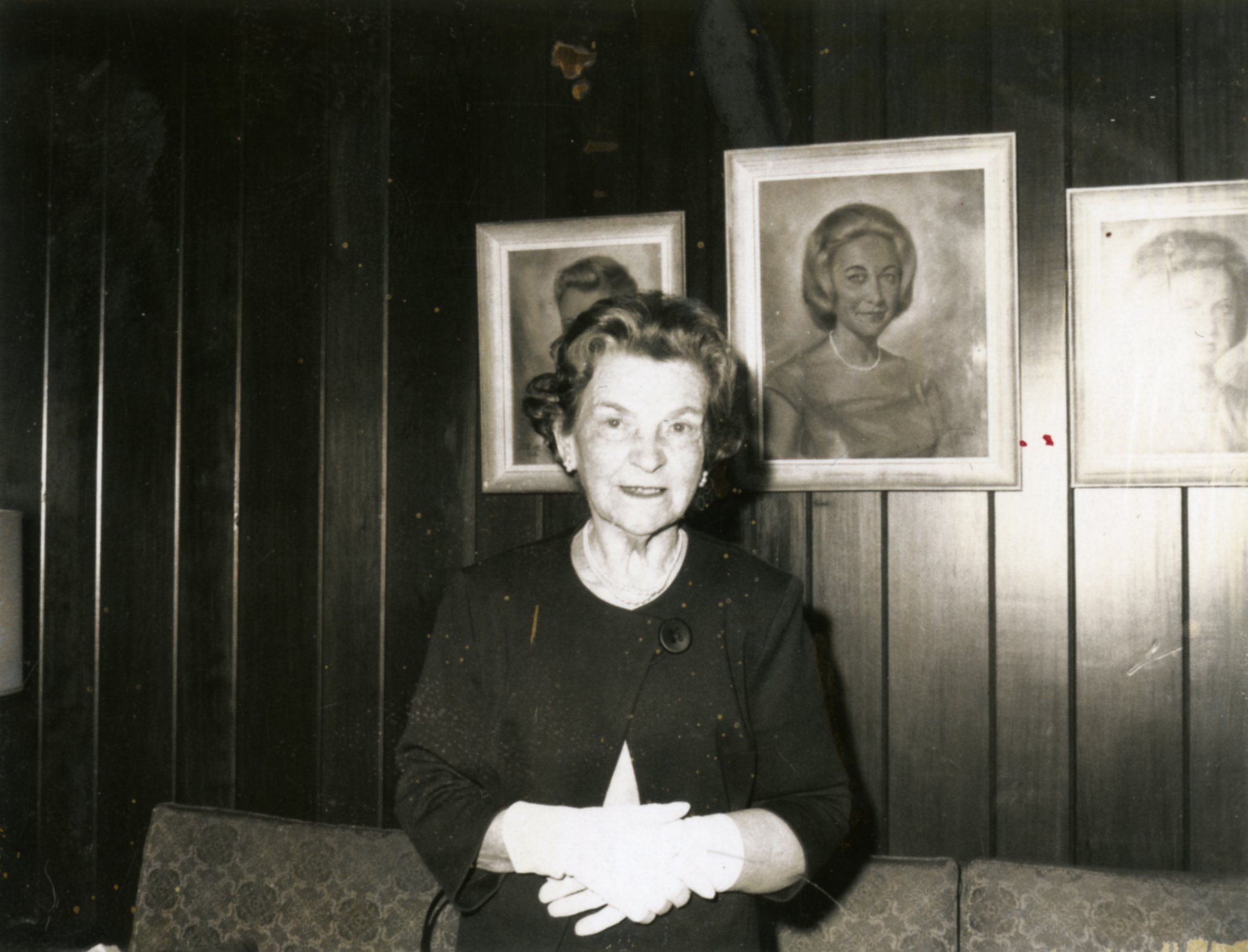The Strong Will of a Jewish Immigrant Woman
Submitted by Olivia Brown
Clara Kligerman Baker. Image courtesy of Larraine Lourie Moses
How Clara Baker Served the Ward One Community Through Her Grocery Store
In 1912, Clara Kligerman and her younger sister, Esther, boarded a ship to New York City; the girls—who were seventeen and twelve years old, respectively—set sail for America, leaving behind their parents and nine other siblings in Nikolaev, Ukraine. While living with an aunt and uncle in New York, Clara met Frank Baker after a benefit show in the city. He lived with his father and brother in Mount Pleasant, South Carolina, where he convinced Clara and Esther to visit (1). By 1917, the young couple had married and moved to Estill, South Carolina. It was after the Bakers relocated to Columbia that they opened an all-purpose grocery store at 931 Gates Street in 1926, right in the heart of the city’s African American community, a neighborhood known as Ward One (2).
Baker's Grocery, painted by Kathryn Baker Lotzoff. Image courtesy of Larraine Lourie Moses
As Jews in the South, the Bakers, like others in their community, had to decide to what extent they would embrace their Jewish culture and customs. Clara’s engagement with her Jewish heritage did not always align with her role as a business owner and operator in Columbia. The Bakers did not settle close to the synagogue or in a neighborhood with other Jewish immigrants. In fact, Clara and Frank Baker were one of very few non-black families on their block. By 1967, when Clara Baker sold the store to Oscar Shealy, a long-time employee, Baker’s Grocery had become a respected and valued part of its surrounding community.
Though Baker’s Grocery is listed under Frank Baker’s ownership, Clara truly ran the business on a daily basis. Her steadfast dedication to the store is remembered most by family and friends. John Bell, a long-time customer at Baker’s and close family friend, described Clara Baker as “one of the hardest working women you’ve ever seen in your life,” working 12 to 15 hour days at the grocery.(3) She opened the store early and closed it late so as to better serve the needs of her customers.
It was the relationships Clara built with her clientele that made her a well-known figure in Ward One. Though she was a white, Jewish woman serving an almost exclusively African American customer base, she was neither marginalized nor taken advantage of. Through 41 years of reliable service, relationship building, and the generous lending of credit to those in need, she became a protected and respected member of her community.
A quick look around Baker’s Grocery and a customer might see a section of fresh produce with onions, collards, and turnip greens; milk and butter, along with eggs bought from an elderly woman in the neighborhood; dry goods, like tobacco, medicine, and assorted clothing items; and, a meat counter—the most important factor in discerning who may or may not purchasing from Baker’s—which advertised a slew of non-kosher meats, including ham hocks, pig ears, and pickled pigs’ feet. Though Clara Baker’s grocery was not selling kashrut (kosher) food or ingredients commonly used in Jewish dishes, the Baker family was still very familiar with old world food traditions, often making borscht, strudel, and homemade dill pickles at home for her family. (4)
Clara Baker at the home of her daughter, Toby Baker Lourie, in the 1960s. Image courtesy of Larraine Lourie Moses
The hard-working attitude of Clara Baker shows the commitment many Jewish immigrants had to the businesses they established and the opportunities they had been given upon arrival in the United States. Though Clara did not push her family to eat and serve kosher food, she was still cooking traditional dishes from her eastern European background and expressing her Jewish cultural heritage at home, while asserting her entrepreneurial dedication at the store.
Notes:
1. Hyman Baker (or Chaim Becker), Frank Baker’s father, came to America from Zabludow, Poland, which was roughly 17 miles from Bialystock, in 1883. The family settled in New York originally, but in 1887 moved to Charleston where they had relatives and knew others from Bialystock, including the Firetag, Krawcheck, Sharnoff, and Pearlstine families. This information came from family Kligman/Baker family members Lyssa Kligman Harvey and Susan Brill.
2.Laurie Baker Walden, “A March Through Time: Baker and Kligman Family Roots,” September 1999. This source is a collection of family memories compiled over a number of years, though the timeframe is unknown. It is believed that these memories were collected as an informal family oral history, but after putting them together Walden sent the document to Historic Columbia’s Jewish Heritage Initiative for use in their research.
3. Walden, “A March Through Time: Baker and Kligman Family Roots.”
4. Ellen Henderson, “Clara Kligerman Baker: Personal Remembrances of Her Life,” December 21, 1974.
Olivia Brown is a Master’s student in Public History at the University of South Carolina.
Instagram: @_oliviabrown, Twitter: @_ombrown



